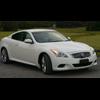Can You Calculate Aproximate Rwkw From Mph?
Announcements
-
Similar Content
-
Latest Posts
-
1/8NPT drill size = 8.7mm. Since the hole got messed up by me, it’s probably around 9mm. So 1/4” NPT would be next step. A drill size of around 11mm would be preferred there which is not way of my M12 (drill 10.5mm and tap M12 threads)
-
3 Kids are starting to hit that ages. I wanted to get them something special to learn on, put down the screens and have some fun. 4Door 2001 R34DE Black Pearl GV1 Jap Import, AU 2nd owner. Pre Work done. Suspension - Wheels Pedders SportsRyder Coilovers Wheels TSG Spokey Boi 18'x9.5"+15 Body JASI Aero 4 door Type R Full Kit LED Conversion - Parker, Blinkers, & Reverse Exhaust Hurricane Headers 100 CPI high flow cat 2.5" Piping Cannon muffler Internal Bride low max stradia ii - front seats Bride RO seat base and Rails (R/H) Cube short shifter LED Conversion - Interior
-
Why are you so adamant on going M12? Why not follow Brad (GTSBoy) suggestion. You're talking moving from a 1/8" size, to a 1/2" effectively. 4 times bigger. Why skip the commonly available sizes in between? The bigger you go, the more likely you are to strip the threads out at a later date, as guaranteed, someone will put a huge spanner on the M12 and really tighten it up, and you're only in thin wall, so not a lot of threads to engage!
-
Hi. Yeah thanks. Car is already at tuners and it staying there to resolve "many" issues they do not like. So it is in a good hands. Getting a good tune on that Nistune ECU too so the car would be good. Just needs a little tune up and love.
-
Probably gonna remove manifold and turbo. I’m not sure if I can get M12 x 1.5 air tight. Could use high temp Loctite 246 or something similar, but I don’t know. Maybe it’s just best to remove everything again and weld an 1/8NPT on there instead.
-







Recommended Posts
Create an account or sign in to comment
You need to be a member in order to leave a comment
Create an account
Sign up for a new account in our community. It's easy!
Register a new accountSign in
Already have an account? Sign in here.
Sign In Now